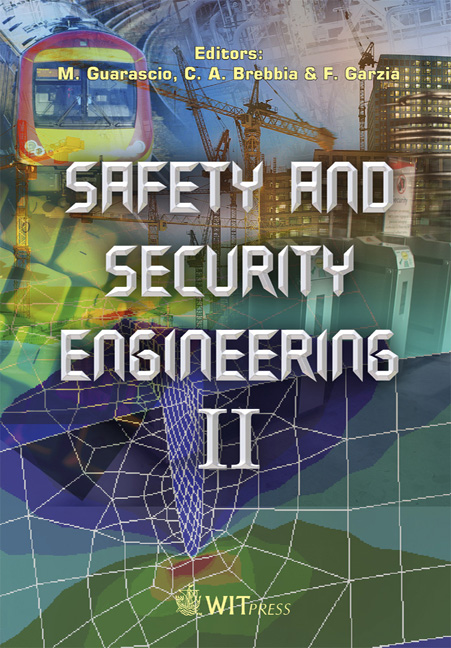Implementation Of EWAR System In The Neutralization Of Selected Chemicals In Building Ventilation Systems
Price
Free (open access)
Transaction
Volume
94
Pages
10
Published
2007
Size
374 kb
Paper DOI
10.2495/SAFE070531
Copyright
WIT Press
Author(s)
T. Nowak, A. M. Patel, A. Dascal, F. Haghighat, S. Rastan, E. Morofsky, I. Butler & J. A. Kozinski
Abstract
This paper presents an Early Warning and Response System (eWAR) system capable of preventing casualties and mass hysteria in the event of a possible chemical release, be it criminal or accidental (in the case of an industrial spill). Experiments are conducted on a lab-scale set-up which uses a wireless computer interface to monitor important ventilation parameters such as air-velocity, humidity, pressure, temperature and their influence on in-duct levels of Volatile Organic Compounds (VOCs) and airborne contaminants. This system is designed to reduce the severity of various airborne contaminants, including some toxic agents, only when concentration of contaminants, regardless of type, generate some abnormal pulses as compared with the average day-to-day normal pulses of indoor and outdoor air. This capability of the system to be activated and deactivated avoids the additional energy and maintenance costs associated with continuous filtration, the frequent regeneration of filter media as well as the cost of additional air handling units to compensate for pressure drops caused by filters. Preliminary results have been obtained using various chemicals and different types of activated carbons (as filters); they show that the in-duct concentration can in fact be controlled and significantly reduce the severity of some release scenarios. Keywords: HVAC, activated carbon, building protection, early warning.
Keywords
HVAC, activated carbon, building protection, early warning.





